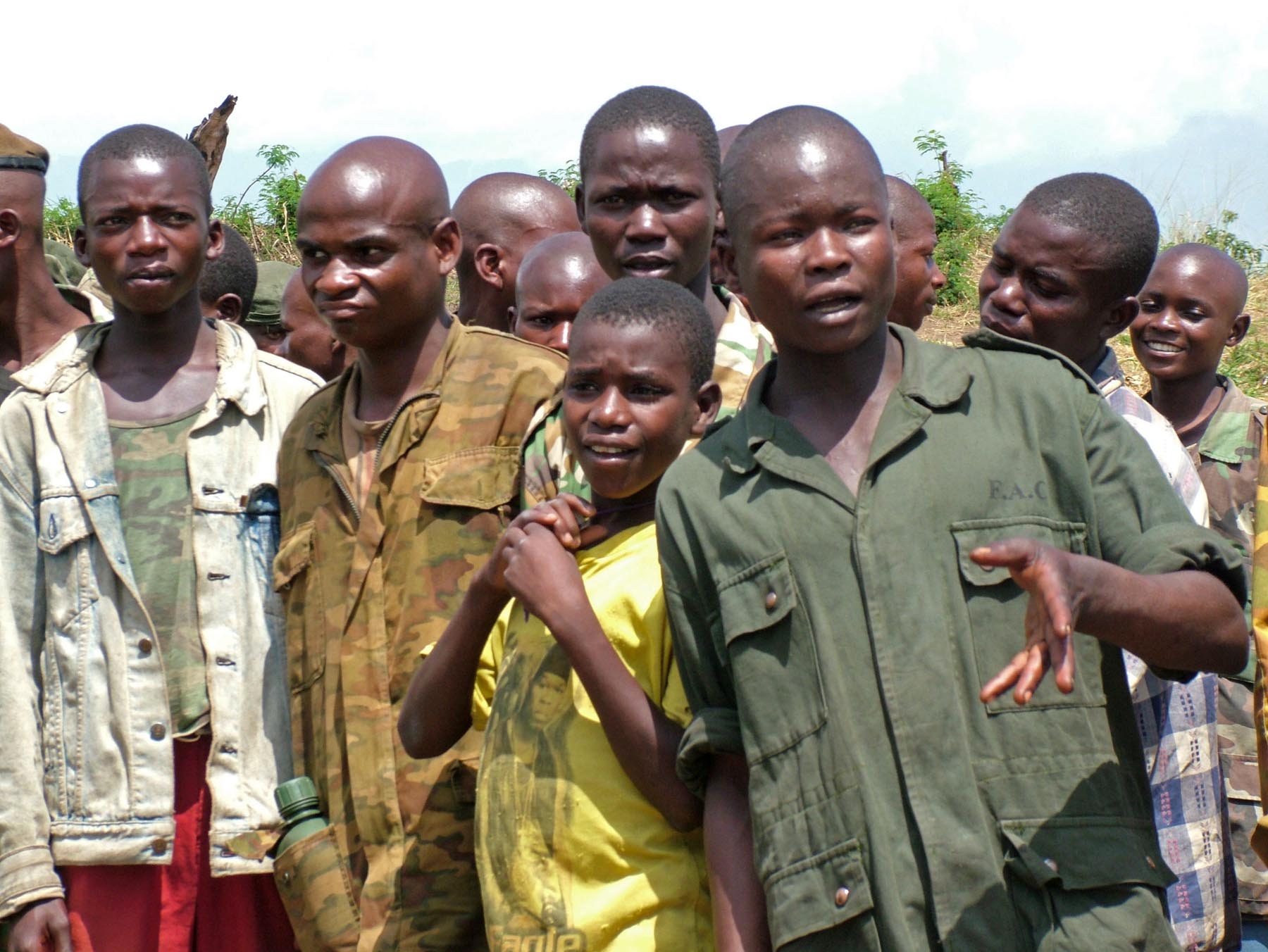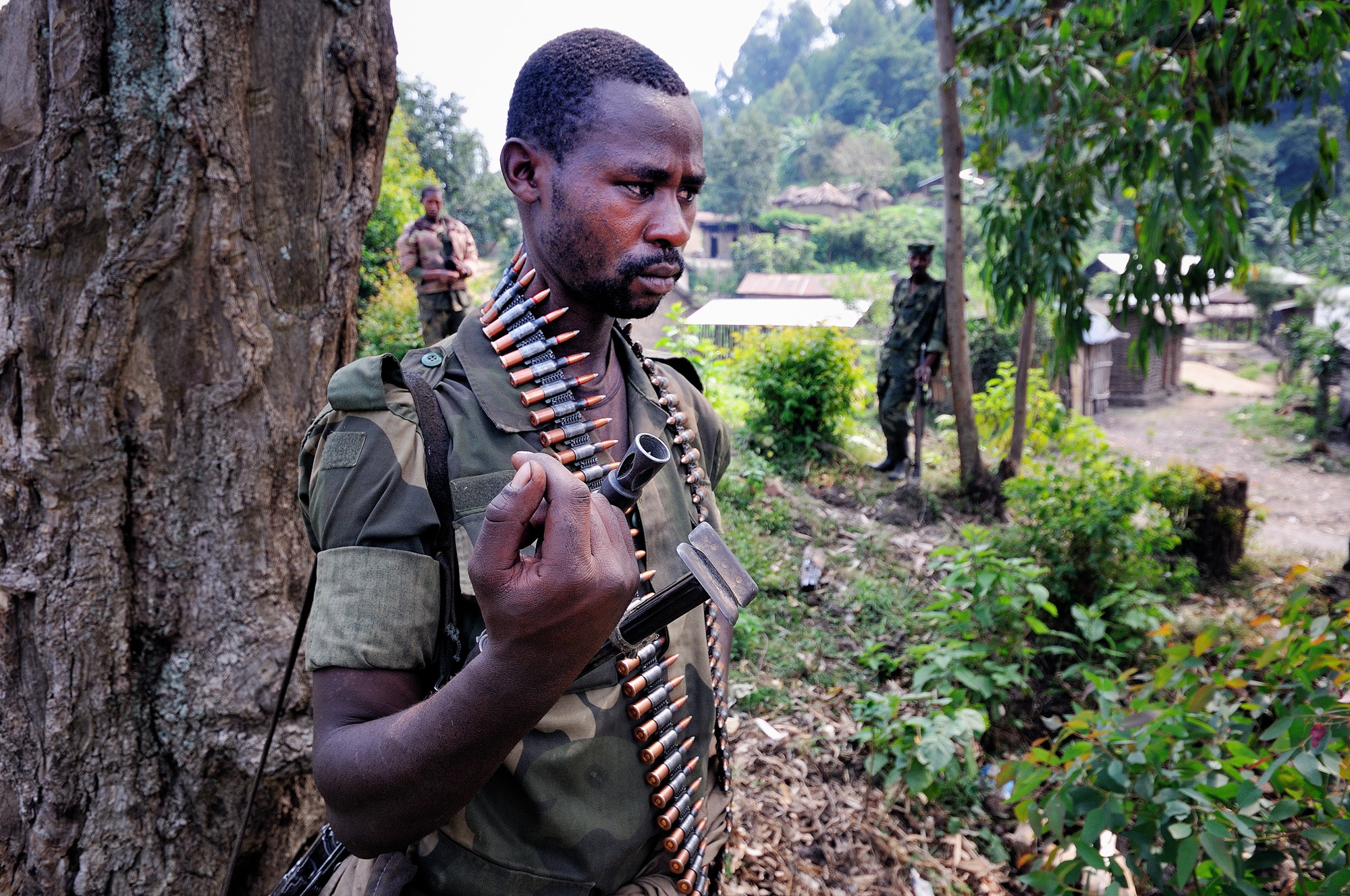Co-written by Anirudh Sivarim

The discourse over child soldiers in Africa was fundamentally altered after the non-governmental organization Invisible Children came out with the short film Kony 2012. Whether for better or worse, viewers of the video called for a series of measures—most notably a U.S.-backed manhunt for Joseph Kony—to ameliorate the suffering faced by former child soldiers employed by the Lord’s Resistance Army. A year later, the International Criminal Court successfully sentenced Thomas Lubanga to 14 years of imprisonment for the use of child soldiers. These successes, however, represent little more than pyrrhic victories in the battle to stem the influx of young children into armies in conflict-ridden zones.

The Democratic Republic of Congo has a particularly poor human rights record in the realm of child soldiers. There are approximately 7,000 child soldiers in the eastern provinces of Equateur, Ituri, Katanga, North and South Kivu, and Maniema. Roughly ten percent of the global child soldier population is in the Congo. Furthermore, Congolese child soldiers remain key actors in the country’s political dynamic; most notably, in 2001, President Laurent Kabila—father of current premier Joseph Kabila—was assassinated by a member of his personal child soldier bodyguard unit, the kadogos.
The conflict in Congo captivated media attention towards the tail end of 2012. For the first time in what has been a conflict spanning decades, major news stations were reporting on the activity on the M23, a rebel military group, and the ethnic conflict in East Congo. Joseph Kabila became a known name beyond Eastern Congo. Notably absent from the discourse, however, was the plight of the children who lived in the crossfire zone of the conflict. Children under the age of 18 were and still remain in imminent danger of conscription.
Media coverage of kadogos, arguably like the coverage of Congo in general, is prone to the occasional sensationalism. A few years ago, a frequently quoted story was that of “falling whistles.” In this story, children that were too young to hold guns were sent into battle armed with nothing more than whistles. The purpose of the whistles was to make enough noise to scare the enemy troops, and the purpose of the children was to serve as human shields. The story was propagated by an NGO named after this incident, Falling Whistles, which sells whistle necklaces and invests in Congolese visionaries. Salma Hayek, Jon Stewart and will.i.am all lent their support to the cause of the “whistle-blowers.” Even CNN took this phenomenon to be a fact, referring to falling whistles and the eponymous NGO in an article for its Freedom Project blog. However, the human rights blog Wronging Rights pointed out the absurdity in believing that whistles could frighten the FDLR (Democratic Forces for the Liberation of Rwanda). Jason Stearns, a Ph.D. candidate at Yale and expert on Congo affairs, blogged that in all his years visiting the Congo, he had not come across a single militia that thought any child was too small to hold a gun. The founder of Falling Whistles commented on Stearns’s blog post, saying that falling whistles referred to a single incident that she had heard about while visiting the Congo, and this served as the inspiration for her organization.

According to Human Rights Watch, recruitment of child soldiers to both the Congolese government and the M23 rebels increased dramatically following the escalation of violence in Goma, Eastern Congo. As a result of the security vacuum created in the region, many children, especially those orphaned by the conflict, turn to arms in order to guarantee their safety. They are similarly compelled to fight as a product of displacement from their homes; the government’s conflict with the M23 displaces over 100,000 people, with children comprising half that population. Displacement leaves children vulnerable to abduction; they are seized from their homes, on the way back from school, or in public spaces like markets. The situation with child soldiers in Congo is compounded by the poorly regulated black markets for arms in Africa. This makes it easy to arm child soldiers, as the DRC government proved when they distributed weapons amongst children as M23 presence in Congo increased.
Not all child soldiers are conscripted. Some children who would otherwise be forced to go to school in Goma cannot do so due to the violence, and instead opt to fight to combat idleness. Similarly, the incredible poverty of Goma sustained a system where child soldiers, cognizant of the suffering their parents underwent, accept financial incentives in order to take up arms.
Some children choose to live the life of a kadogo to escape from abusive family conditions. They are under the false impression that life in militia camps is plentifully provided with food and money. Even upon reaching the camps, some false impressions perpetuate. Kadogos with the Mai Mai, a loose coalition of guerrilla groups in eastern Congo, are told they have “mai mai magic” protecting them – a mixture of potions and powders that supposedly renders their bodies bulletproof. The magic does not fail, the kadogos are told; any harm that befalls them is a result of them disobeying the rules associated with the magic – such as never stepping over a fallen soldier’s blood, plundering the plants surrounding a village under a raid, or raping a woman.
Once a child becomes a soldier, whether by choice or by conscription, reintegration with society is extremely difficult. Often made to commit crimes against their own villages, they become enemies in their neighbors’ eyes and are viewed as unstable and violent. Girls kidnapped by rebel forces suffer the additional shame of being perceived as “damaged goods.” Even if these children are welcomed back by their local communities, their lack of education makes it impossible for them to secure employment, which is woefully scarce in the poverty-stricken and underdeveloped Congo.
The conflict in the Congo has also generated stories of kadogos that highlight their humanity. Tchicaya Missamou, born in the Congo in 1978 and made a kadogo at the age of 14, now runs a fitness center in California. He escaped from his kadogo life by joining the Congolese military, which he also later left to start a private security militia that helped white families escape the country. This proved to be a mission so unpopular that when his own family tried to escape, his mercenaries revolted, raping his mother in front of his eyes and burning their house down. He was able to somehow still escape to the US with his mother, where he enlisted as a Marine and fought in the Iraq War a few years later. The “warrior fitness camp” he runs now uses a part-civilian and part-military mindset, in his words. The classes it offers include pre-military training, combat simulations, and martial arts as well as regular gym classes.
In 2007, the Tate Modern Art Gallery in London held an exhibition showcasing contemporary Congolese art. The exhibition included a painting titled “Little Kadogo” by the Congolese artist Chéri Samba. In it, a small child, dressed in a military uniform with bright green trainers, holds his hands up in surrender to another hand holding a gun behind him. He is surrounded by a disturbingly bright blue sky and roses, and a stark brown and gold rifle lies next to him. Like the Little Kadogo in the painting, thousands of Congolese children face the choice of picking up the rifle that lies by their side. While the conflict in Congo will undoubtedly take some solving, the top priority must be to secure the fate of the children who fall victim to its violence.
